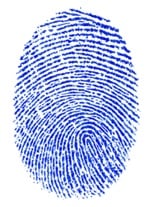The use of intellectual property is intensifying. The intangible assets and the ability to sustain their value enhancement are identified by a growing number of leaders and investors as the key issue in the economic evolution of the profit centres. This tendency reflects the development of the knowledge-based economy, in which knowledge and education are at the centre of the economy, development and social change.
 The ideas, expertise, reputation have great value. To the tangible assets of the entrepreneurs, investors and even of the States and regions, is added, henceforth, for a significant proportion, the intangible, intellectual assets which stand out as vital factor for economic dynamism. The ability to innovate, to create new goods, services or concepts and, more generally, to produce ideas has turned out to be a competitive advantage of utmost importance, key driver of the growth potential of the markets and of the development of brands. While the mass production moved towards countries with low cost of manpower, the developed countries specialized in the design of new products, the development of cutting-edge technologies, elaboration and implementation of specific expertise, commercial offer building or innovation in arts applied to industry and to services (design, graphic design, etc.).
The ideas, expertise, reputation have great value. To the tangible assets of the entrepreneurs, investors and even of the States and regions, is added, henceforth, for a significant proportion, the intangible, intellectual assets which stand out as vital factor for economic dynamism. The ability to innovate, to create new goods, services or concepts and, more generally, to produce ideas has turned out to be a competitive advantage of utmost importance, key driver of the growth potential of the markets and of the development of brands. While the mass production moved towards countries with low cost of manpower, the developed countries specialized in the design of new products, the development of cutting-edge technologies, elaboration and implementation of specific expertise, commercial offer building or innovation in arts applied to industry and to services (design, graphic design, etc.).
In this context, the intellectual property, which is an internationally recognized right of ownership, which reveals itself as the major means of creating a secure environment for the investment in innovation and dissemination of creative goods and services.
A valuable property and asset. The value of a company or of a private research centre or a university is increasingly linked with the value of the intellectual property portfolio, which conveys and protects its ability to innovate.
The value of trademarks is probably easier to perceive. A well chosen and carefully protected trademark is a valuable commercial asset for most of the companies. The brand names such as Apple, Google, IBM, Coca-Cola are estimated at over $50 billion each. The reason being that the consumers are, either consciously or unconsciously, attentive to trademarks, to their reputation, to their image and to a set of qualities that they look for in the brand and associate with it. Very often, the consumers are even sentimentally attached to some brands because they convey different values (in the typical case of some sports clothing designers or of the computer hardware manufacturer Apple) to which they subscribe. Therefore, the consumers are prepared to pay more for a good or a service carrying a brand they recognize and which meet their expectations. Thus, simply possessing a brand having a good image and a solid reputation guarantees a company a major competitive edge.
More generally, most of the goods and services provided by any company have at least one intangible component relating to a technology or even a design. Hence, it should come as no surprise that the company’s balance sheet also has a part reflecting this intangible nature. But be intangible as it may, it would be dangerous not to take it into account because it is a source of activity and of real income. Although invisible, these intangible assets have a very high value, sometimes easily quantifiable, sometimes difficult to quantify, in the end result of any industrial, commercial or artistic activity. In many cases, even the financial valuation of these assets greatly exceeds that of the tangible assets. The market value of companies like Sun, Apple, Google or Microsoft is much higher (from 3 to 20 times) than their “tangible” book value.
 The intangible properties often even constitute, from a certain point of view, the genetic heritage of the creative entity (illustrated by our logotype which represents a stylised section of DNA strand or even by the logotype of the European Patent Office which suggests a fingerprint).
The intangible properties often even constitute, from a certain point of view, the genetic heritage of the creative entity (illustrated by our logotype which represents a stylised section of DNA strand or even by the logotype of the European Patent Office which suggests a fingerprint).
The Intellectual property rights, which we help you put at the service of your business activity, protect this heritage, and the interests of the creative entity by conferring on the latter a genuine right of ownership over its creations, in the same manner as the tangible assets are themselves subject of tangible or corporeal ownership.
An investment protection tool. The patents and designs allow, at a very early stage, to identify, account for and protect the innovations and, thus, facilitate the financing thereof. The investors endeavour to finance the companies which will survive and become dominant undertakings. Their information being imperfect, they seek evidence of the companies’ capacity to adapt to changing trends. But, the changing trends in modern economy are often the result of technological and aesthetic innovations and improvements. The companies that innovate or contribute to the improvement of the technology are, therefore, perceived by the investors as those with greater potential for adjustment and survival. That is why, the most innovative companies usually attract more capital, and, hence, more funds to invest in R&D. In this manner, they increase the likelihood of their ability to innovate, which attracts fresh funds, and so on. Innovation attracts investment, which in turn acts as an incentive for innovation.
Of course, even without having any protection, an innovative company is able to attract capital because it has potential or occupies an important position on the market. But without exclusivity, the company runs the risk of being copied and of being unable to dominate the market. It will be easier for the company that protects its intellectual capital for example by patents or registered designs, to attract capital and to maintain its exclusive rights and/or leading role.